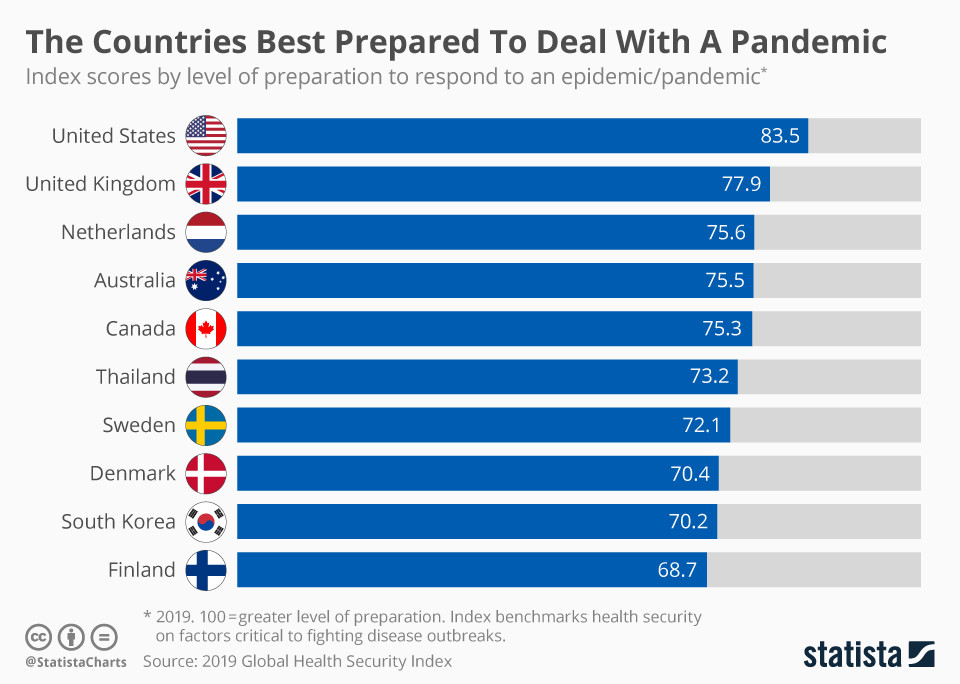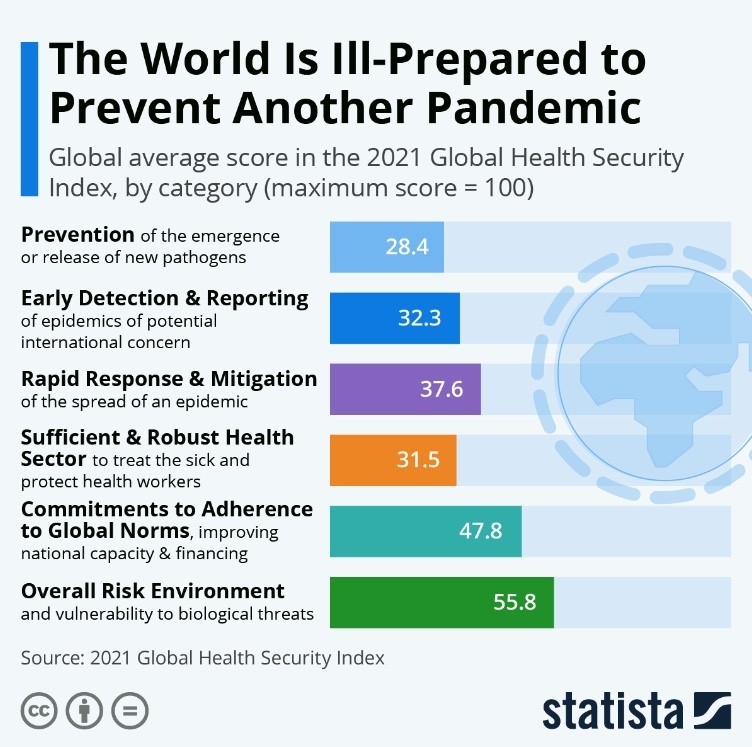Disease X: In the wake of the COVID-19 aftermath, global leaders and scientists are redirecting their focus to a looming and potentially more devastating menace: Disease X. This hypothetical pathogen serves as a placeholder for any unforeseen infectious disease, emphasizing the need for preparation against a future pandemic.
Disease X: A Respiratory Virus on the Horizon
Recent studies suggest that Disease X is highly likely to manifest as a respiratory virus, further intensifying concerns about its potential impact. Coined to prompt international readiness for a pathogen surpassing the severity of COVID-19, Disease X has garnered attention from the World Health Organization (WHO) as a high-priority threat, alongside diseases like Ebola and Zika virus.
Why Disease X is 20 times more fatal than Covid-19?
The potential for Disease X to be 20 times more fatal than COVID-19 raises critical concerns rooted in various factors. Understanding these elements provides insights into why Disease X might pose a more significant threat:
- Virulence and Severity: Disease X may exhibit a higher degree of virulence, leading to more severe symptoms and complications compared to COVID-19.
- Transmission Dynamics: If Disease X has a more efficient mode of transmission, spreading rapidly and widely, it could result in a higher number of infections and, consequently, more fatalities.
- Lack of Immunity: If the global population lacks immunity to Disease X, as opposed to some level of immunity developed against COVID-19, the impact could be more devastating.
- Delayed Detection and Response: A delayed detection and response to Disease X could allow the virus to gain a foothold, leading to a more widespread outbreak and increased fatalities.
- Treatment Challenges: Disease X might present challenges in terms of treatment options, efficacy, or accessibility, contributing to a higher mortality rate.
- Targeted Population Vulnerability: If Disease X disproportionately affects vulnerable populations or lacks effective preventive measures, the impact on those groups could be more severe.
- Mutational Changes: The virus causing Disease X might undergo mutational changes that enhance its lethality, surpassing the relative stability observed in the COVID-19 virus.
- Global Preparedness Gaps: If there are deficiencies in global preparedness and response mechanisms specific to Disease X, it could result in a less effective containment of the outbreak, leading to increased fatalities.
- Healthcare System Strain: Disease X may strain healthcare systems more intensely, overwhelming medical facilities and personnel, and impacting the overall ability to provide timely and effective care.
- Unique Biological Characteristics: Disease X may possess unique biological characteristics that make it more challenging to control, treat, or develop vaccines against, contributing to its higher fatality rate.
It is essential to recognize that the comparison is speculative, rooted in the hypothetical nature of Disease X. Understanding the potential factors influencing its higher fatality rate allows for a more informed approach to global health preparedness and response strategies.
WHO’s Call to Action: Early Research and Development for Disease X
Recognizing the gravity of Disease X, the WHO emphasizes the importance of early cross-cutting research and development. This strategic approach aims to equip the global community with the tools necessary to combat a pathogen more catastrophic than the current pandemic.
Unraveling the Mystery: What is Disease X?
The term “Disease X” was introduced to prompt international preparedness for a potential epidemic or pandemic of unprecedented scale, surpassing the devastating impact of COVID-19. Leaders, including WHO Chief Dr. Tedros Adhanom Ghebreyesus, are convening at the World Economic Forum to strategize and discuss proactive measures against Disease X.
Learning from the Past: Preparing for Disease X After the Ebola Epidemic
Preparations for Disease X were initiated after the 2014–2016 Ebola epidemic in West Africa. The WHO compiled a priority list of diseases, including COVID-19, Crimean-Congo hemorrhagic fever, Ebola virus disease, Marburg virus disease, Lassa fever, Middle East respiratory syndrome (MERS), and SARS, among others. The goal is to accelerate research and development, learning from the delays witnessed during the Ebola outbreak, where 11,000 lives were lost due to insufficient interventions.
Rapid Response Initiatives: CEPI’s $3.5 Billion Plan
The Coalition for Epidemic Preparedness Innovations (CEPI) is at the forefront, actively working on rapid response vaccine platforms. With a dedicated $3.5 billion plan, researchers aim to develop new immunizations within 100 days of identifying a potential pandemic, preventing a recurrence of the tragic delays witnessed during the Ebola crisis.
Understanding Transmission: How is Disease X Spread?
Disease X is believed to be caused by “pathogen X,” likely a zoonosis or infection transmitted between humans and animals. Richard Hatchett, CEO of CEPI, suggests that this potential threat may be an RNA virus, emphasizing the importance of understanding transmission dynamics.
The Next Pandemic: Emerging Threats on the Horizon
While coronavirus and influenza have been recent causes of pandemics, health experts highlight paramyxovirus as a potential candidate for the next global threat. The World Health Organization warns of “Disease X,” suggesting it can result in 20 times more fatalities than the current coronavirus pandemic.
Are We Prepared for the Next Pandemic?
Despite being one of the better-prepared countries globally, the U.S. faces challenges in responding to pandemics. The Global Health Security Index indicates room for improvement, emphasizing the need for continuous efforts to enhance the country’s capacity to respond effectively to future health crises.
1.67 Million Uncharted Viruses: Navigating Potential Health Threats
Among the vast array of 1.67 million unknown viruses, one particularly concerning example is Rift Valley Fever (RVF), acknowledged by the World Health Organization (WHO) as one of the eight known diseases with the highest potential for triggering a health emergency. In its severe manifestation, RVF can lead to debilitating consequences such as blindness, severe bleeding, and brain swelling.
Typically transmitted through mosquito bites, there is currently no evidence of human-to-human spread. However, the possibility looms that RVF could transform into the next Disease X if the virus responsible adapts its transmission mode to respiratory spread, resembling the transmission pattern of flu viruses.
These 1.67 million unidentified viruses are categorized within approximately 25 viral families. Among them, scientists have successfully identified 120 viruses belonging to these families, presenting potential risks to human health. Recognizing the impracticality of preparing for every viral pandemic threat, researchers have developed a strategic approach.
This involves pinpointing prototype (model) viruses from these families that possess the highest potential to pose a significant risk to humans, especially those lacking known medical countermeasures.
In essence, this proactive strategy allows scientists to focus their efforts on understanding and developing countermeasures for the viruses with the greatest potential impact on human health, providing a more targeted and effective approach in the face of the vast and varied landscape of unknown viral threats.
Collaborative Global Efforts: A Unified Approach Against Disease X
As the specter of Disease X looms, international collaboration becomes paramount. Governments, organizations, and research institutions must unite to share knowledge, resources, and expertise. A coordinated global effort is crucial to staying one step ahead of potential pandemics and ensuring a swift and effective response.
Innovations in Surveillance and Early Detection
Investing in advanced surveillance technologies and early detection systems can significantly enhance our ability to identify and monitor potential outbreaks. Timely detection is key to implementing swift containment measures and preventing the rapid spread of infectious diseases.
Strengthening Healthcare Infrastructure
A robust healthcare infrastructure is fundamental to our collective defense against Disease X. Governments worldwide should prioritize investments in healthcare systems, ensuring they are well-equipped, adequately staffed, and capable of handling the surge in patients during a health crisis.
Public Awareness and Education
Educating the public about Disease X and the importance of preventive measures is essential. A well-informed population is more likely to adhere to guidelines, practice good hygiene, and contribute to the overall resilience of communities in the face of potential health threats.
In conclusion, Disease X poses a formidable challenge that demands our attention and proactive measures. By staying vigilant, fostering global collaboration, and investing in research and preparedness, we can fortify our defenses against the uncertainties of the future. It is through collective efforts that we can navigate the unpredictable terrain of infectious diseases and build a resilient world prepared for any health crisis that may arise.
FAQs
- What is Disease X, and why is it considered a potential global threat?
- Answer: Disease X is a term coined to represent an unknown infectious pathogen with pandemic potential. It is considered a global threat because it signifies the anticipation of future infectious diseases that could surpass the impact of current known threats, like COVID-19.
- How does Disease X differ from known infectious diseases like COVID-19 and influenza?
- Answer: Disease X differs as it symbolizes an unforeseen and potentially more severe infectious disease. Unlike named diseases, Disease X is a placeholder for an unknown pathogen, emphasizing the need for preparedness against novel threats.
- What prompted the creation of the term “Disease X,” and what is its significance in global health discussions?
- Answer: The term was coined to prompt international awareness and preparation for an unknown, potentially catastrophic pathogen. Its significance lies in fostering global discussions, strategies, and collaborations to enhance readiness for future pandemics.
- Why is the World Health Organization (WHO) emphasizing early cross-cutting research and development for Disease X?
- Answer: Early research and development are crucial to understanding and preparing for Disease X. The WHO emphasizes this to ensure timely interventions, countermeasures, and a proactive approach in addressing potential threats to global health.
- How are global leaders preparing for Disease X, as discussed in the World Economic Forum in Davos?
- Answer: Global leaders are convening to discuss strategies for tackling Disease X, as seen in sessions like “Preparing for Disease X” at the World Economic Forum. The focus is on novel efforts to prepare healthcare systems and prevent potential crises in the face of an unknown pathogen.
- What lessons have been learned from past epidemics, such as the 2014–2016 Ebola outbreak, in shaping strategies for Disease X?
- Answer: The preparation for Disease X draws lessons from past epidemics, especially the Ebola outbreak. The priority list of diseases, created after the Ebola crisis, aims to accelerate research and development, avoiding delays witnessed in previous outbreaks.
- Can you elaborate on the efforts of the Coalition for Epidemic Preparedness Innovations (CEPI) in addressing Disease X?
- Answer: CEPI is actively working on rapid response vaccine platforms to develop new immunizations within 100 days of identifying a potential pandemic, under a $3.5 billion plan. This initiative aims to expedite countermeasure development to prevent significant delays seen in previous outbreaks.
- What makes Disease X potentially more catastrophic than COVID-19, and how is its transmission expected to occur?
- Answer: Disease X is speculated to be more catastrophic due to its unknown nature and potential to cause severe outcomes. Its transmission is expected to be respiratory, similar to COVID-19, making it a considerable global health concern.
- Why are health experts expressing concerns about Disease X being 20 times more fatal than the coronavirus?
- Answer: Concerns arise from the potential higher fatality rate, which could result from factors like increased virulence, efficient transmission, lack of immunity, and challenges in treatment and containment strategies.
- How can individuals, communities, and nations enhance their preparedness for potential Disease X outbreaks based on current global initiatives?
- Answer: Individuals, communities, and nations can enhance preparedness by staying informed, supporting global health initiatives, participating in vaccination programs, and promoting practices that prevent the spread of infectious diseases. Being proactive and engaged in public health measures is key to global readiness.
Read More >> https://trenditweetz.com/liver-health-formula/





